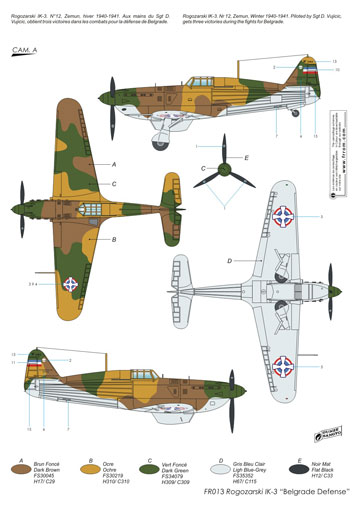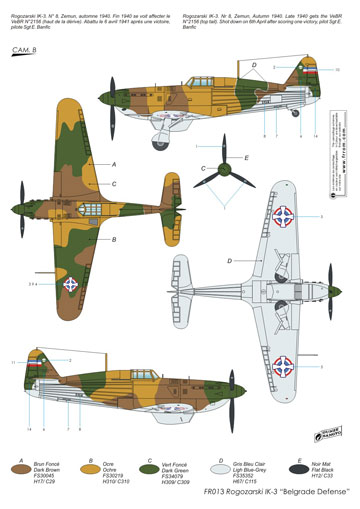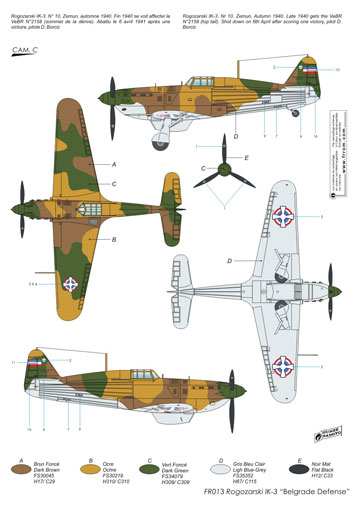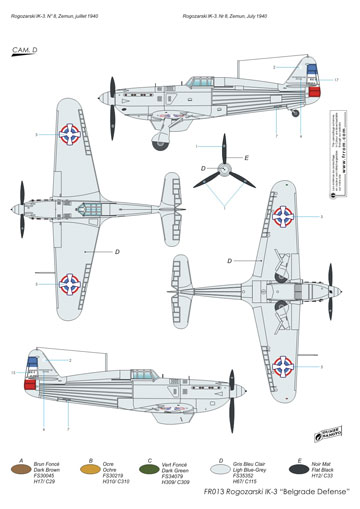FR013 Rogozarski IK-3 Belgrade Defence
History:
In 1941, the IK-3 is the most advanced locally built Yugoslav fighter. Designed by engineers Ilic and Sivcev, the IK-3 prototype make her maiden flight on April 14th, 1938. An initial order of 12 planes follows the very satisfying trials. First batch of 6 IK-3 is delivered during March 1939 (Nr 2 to 7, big wheel doors), second batch in July 1940 (clipped wheel doors). All are used by 51 st Grupa, on Zemun air base (Belgrade).
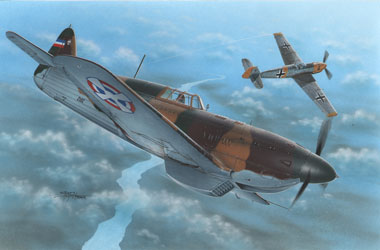
During the German attack on 6 April, 1941, the IK-3s are employed for Belgrade north sector defence. During the fights, they shot down eleven enemy planes, but very quickly suffer huge attrition. N° 8 (N°2156) is shot down on the 6 April (after one victory), n°12 (N°2160) gains three victories and is burnt by Yugoslav forces on 12 April with N°13 (N°2161) and n°7 on Veliki Radiki airfield. Three damaged planes are captured by German forces in Zemun, as well as some planes under repair.
Camouflages and markings: initially painted overall in siva (light blue-grey), externally and internally (cockpit, wheels bays), the IK-3s get 4 large ‚Kosovo crosses‘ on wings. Late 1940, a standard camouflage, upperside ochre / dark green / dark brown, lowerside light blue-grey is painted over the previous camouflages, with change of VeBR (Army ID number) for some planes and migration from fuselage to top of vertical tail, one of the top cockades being suppressed and the other one reduced in size (usually on port wing). All paintings are gloss.
Specifications: wingspan 10,30 m, lenght 8 m, wing area 16,50 m2, weight 2630 kgs, max speed 520 Km/h at 5.000 m, ceiling 9.400 m, range 600 Km. Weapons in the bow: one Oerlikon FF/SMK M.39 E.M. 20 mm gun, two 7,92 mm Browning machine guns. Engine: a 12 cylinders ‚moteur-canon‘ Hispano-Suiza 12 Y 29 developing 910 cv driving a constant speed Chauvière propeller (N° 8 to 13).
